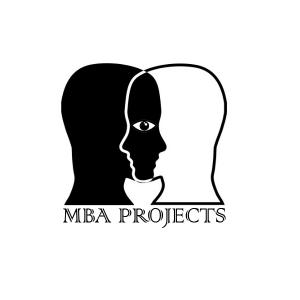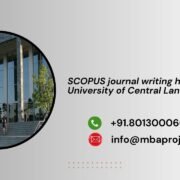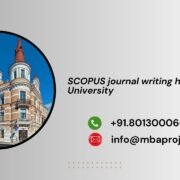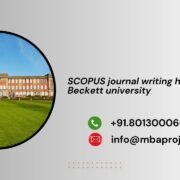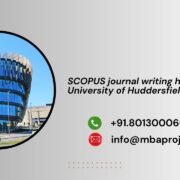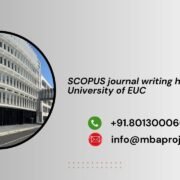SCOPUS journal writing help in University of Central Lancashire
SCOPUS journal writing help in University of Central Lancashire
SCOPUS journal writing help in University of Central Lancashire. The University of Central Lancashire (UCLan) is one of the UK’s leading modern universities, recognized for its research excellence across disciplines such as business, health sciences, engineering, and social sciences. For students, faculty, and researchers at UCLan, publishing in SCOPUS-indexed journals is a vital way to enhance academic credibility, global visibility, and career opportunities. However, the process is often challenging due to strict journal requirements. This is where SCOPUS journal writing help in University of Central Lancashire becomes valuable.
Why SCOPUS Journal Writing Support Matters at UCLan
UCLan promotes impactful research and encourages scholars to publish in globally recognized journals. But writing for SCOPUS-indexed publications requires:
-
High-quality research design
-
Clear academic writing style
-
Proper formatting and referencing
-
Plagiarism-free content
By seeking SCOPUS journal writing help, UCLan researchers can bridge the gap between strong research ideas and international publication standards.
Key Benefits of SCOPUS Journal Writing Help in UCLan
-
Improved Writing Quality
-
Professional editing ensures clarity, coherence, and readability.
-
-
Journal Selection Guidance
-
Experts help match your research with the right SCOPUS-indexed journal.
-
-
Reduced Rejection Rates
-
Pre-submission review improves chances of acceptance.
-
-
Time-Saving
-
Researchers can focus on core research while experts handle formatting and compliance.
-
-
Career Growth
-
Publications in SCOPUS journals strengthen academic CVs and open global opportunities.
-
Challenges Faced by UCLan Researchers
-
Struggles with academic English writing.
-
Difficulty in understanding journal-specific guidelines.
-
Lack of knowledge about impact factors and journal rankings.
-
Repeated rejections due to minor errors.
How SCOPUS Writing Help Solves These Issues
-
Editing and proofreading services to refine manuscripts.
-
Workshops and training on SCOPUS publishing.
-
Plagiarism checking tools to ensure originality.
-
One-to-one mentoring for research structuring.
The Role of UCLan in Supporting SCOPUS Publications
The University of Central Lancashire actively supports research publication through:
-
Research Centres & Institutes: Offering resources across disciplines.
-
Doctoral Training Programmes: Providing writing and publishing workshops.
-
Library Services: Access to SCOPUS, Web of Science, and other databases.
-
Academic Mentorship: Faculty experts guiding publication journeys.
FAQs on SCOPUS Journal Writing Help in UCLan
1. Does UCLan provide SCOPUS publication support?
Yes, UCLan offers research writing workshops, library access, and faculty mentorship for SCOPUS publishing.
2. Can undergraduate or master’s students publish in SCOPUS journals?
Yes, with strong research and proper guidance, students can publish.
3. Do SCOPUS journals charge fees?
Some are free, while others require Article Processing Charges (APCs).
4. How long does it take to publish in SCOPUS?
It depends on journal timelines, but professional writing help can speed up the process.
Conclusion
For scholars at the University of Central Lancashire, publishing in SCOPUS-indexed journals is a key milestone in academic growth. With professional SCOPUS journal writing help in UCLan, researchers can improve writing quality, select suitable journals, and boost acceptance chances.
Thank you for reading our Blog “SCOPUS journal writing help in University of Central Lancashire”.
Also, read our more BLOG here.
For Order “SCOPUS journal ” feel free to contact us at Mob: Call / WhatsApp: +91.8013000664 || Email: info@mbaprojects.net.in




